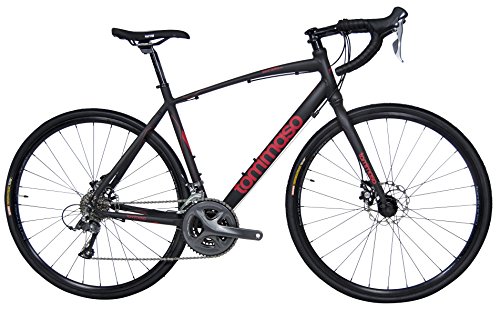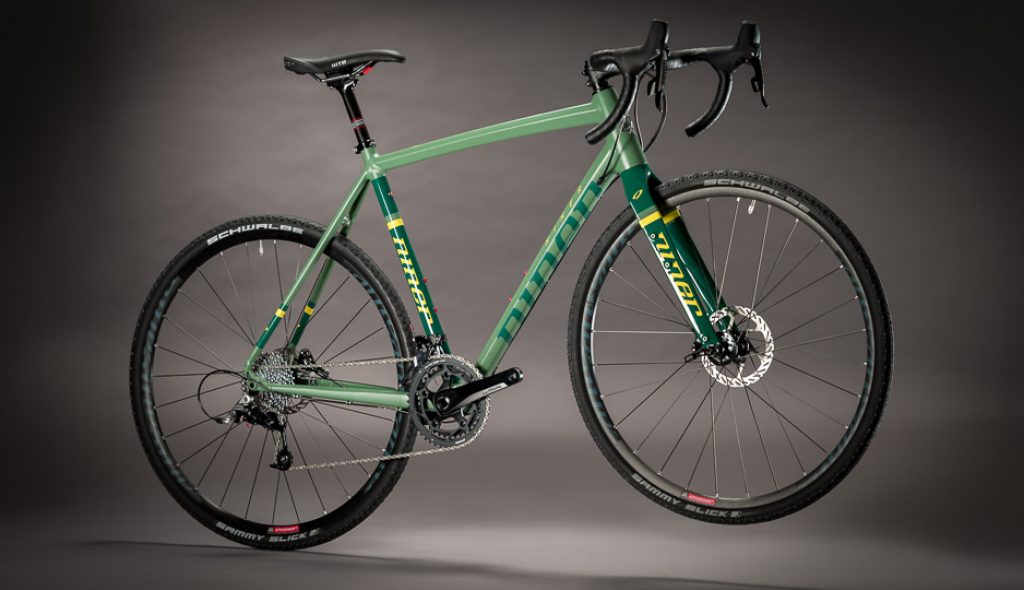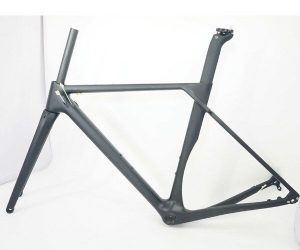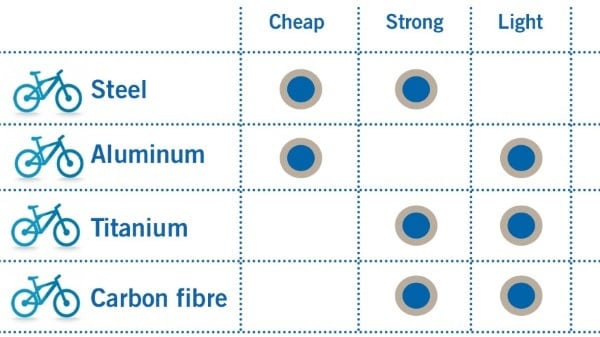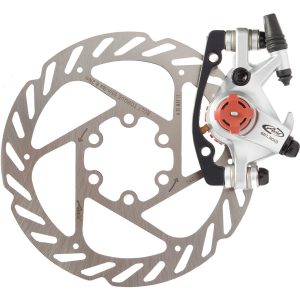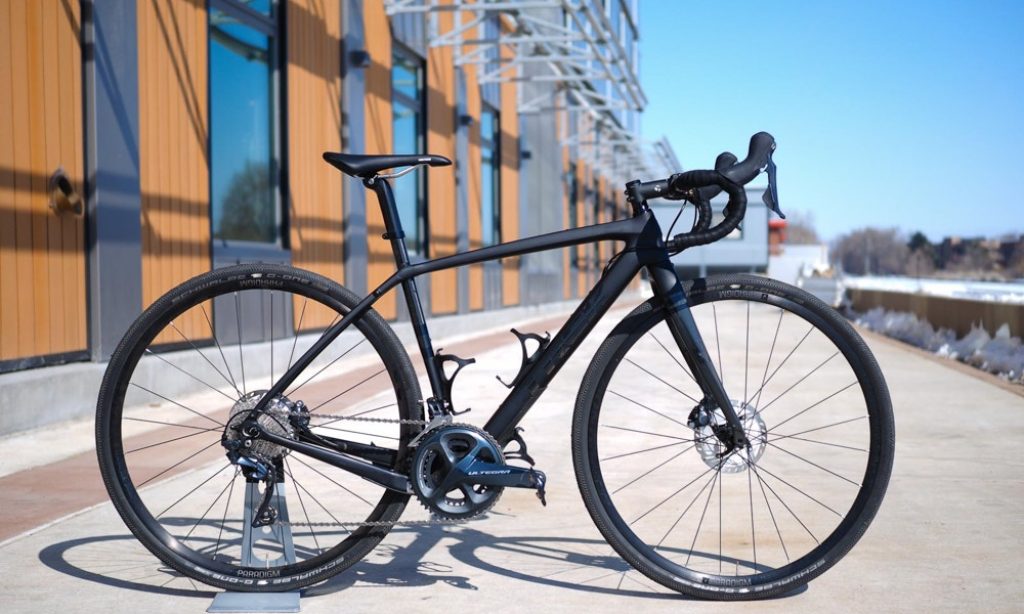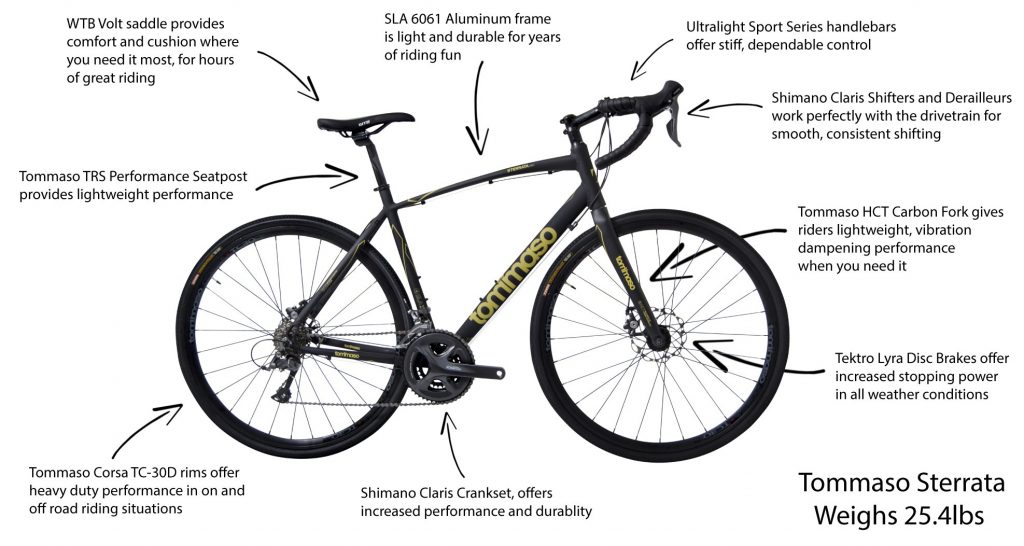If you are a cross-country cycler, you have probably run across plenty roads and trails that make you cringe when considering a road bike, but are a bit too urban for a mountain bike. Is there are a bike best suited for conditions between these two extremes? There is, and it is known as a gravel bike.
Besides acquainting you with the best gravel bikes under 1000 dollars, this guide is designed to:
• Provide you with a better understanding concerning the makeup and characteristics of a gravel bike.
• Examine some of the features and benefits to look for in the best gravel bikes.
• Review ten of the top contenders among gravel bikes under 1000 dollars.
• Answer some common questions about gravel bikes.
By the time we wrap up our guide, you should have a solid understanding of gravel bikes as well as a good idea which gravel bikes we reviewed is the best fit for you when it comes time to make a purchasing decision. With those objectives in mind, let’s start by establishing the factors which define a gravel bike.
Top 10 Gravel (Adventure) Bikes under $1000
| Product | Features | Rating | Checkout | ||
|---|---|---|---|---|---|
| 1 | 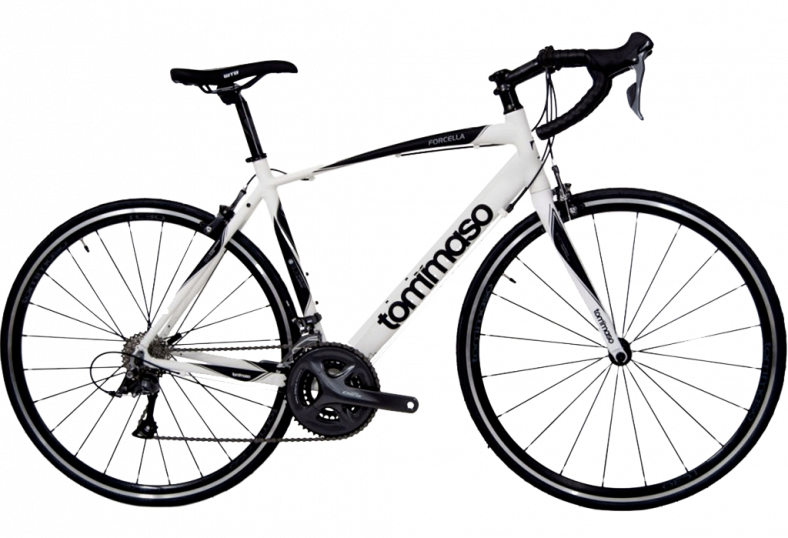 Tommaso Forcella |
| |||
| 2 | 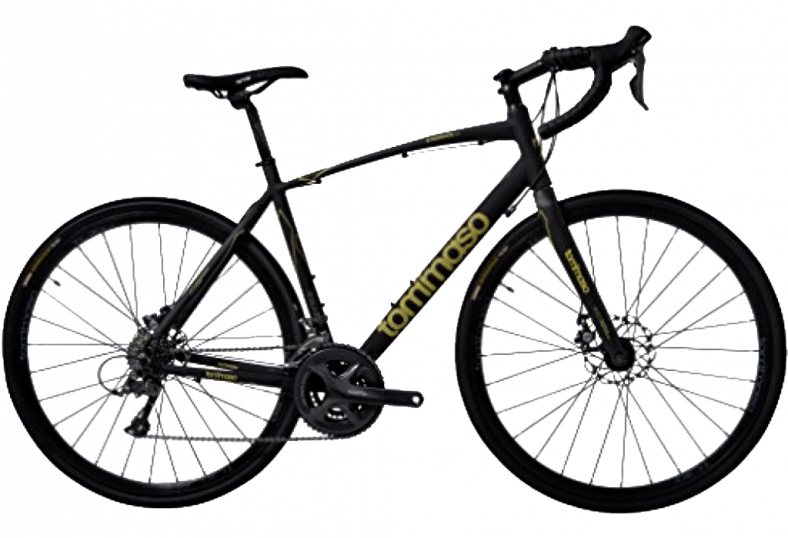 Tommaso Claris R2000 |
| |||
| 3 | 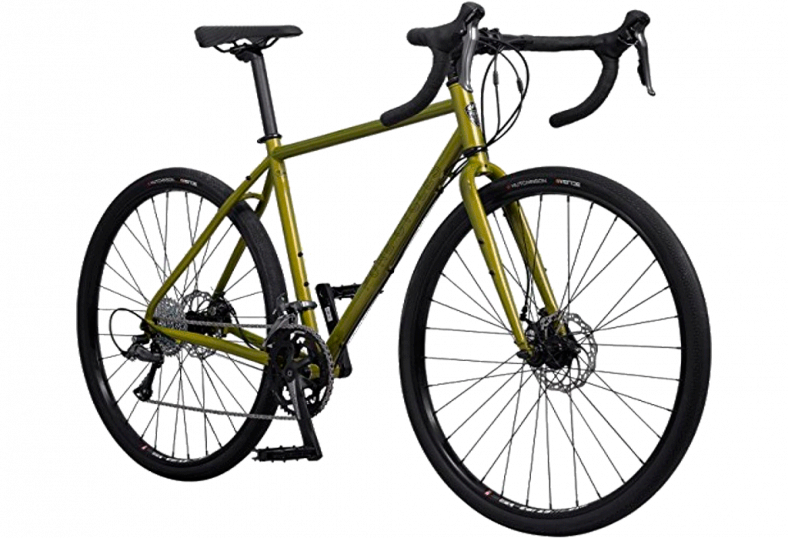 Pure Cycles Adventure |
| |||
| 4 | 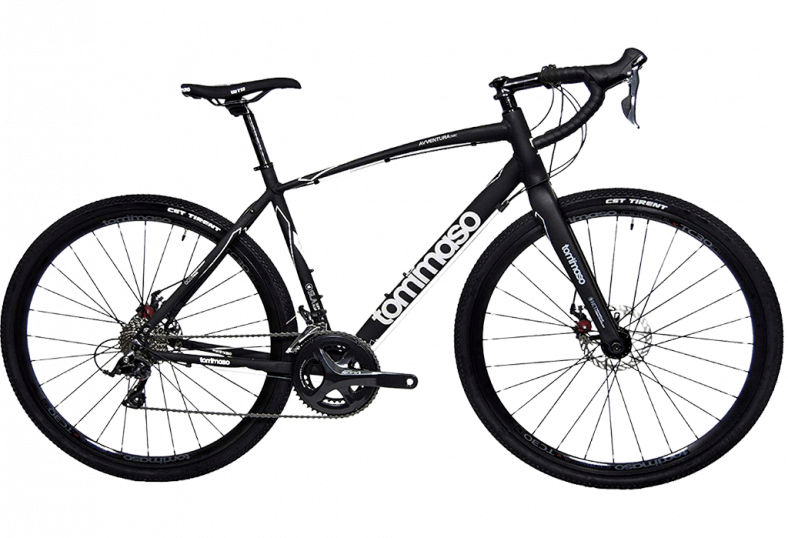 Tommaso Avventura – Shimano Sora |
| |||
| 5 | 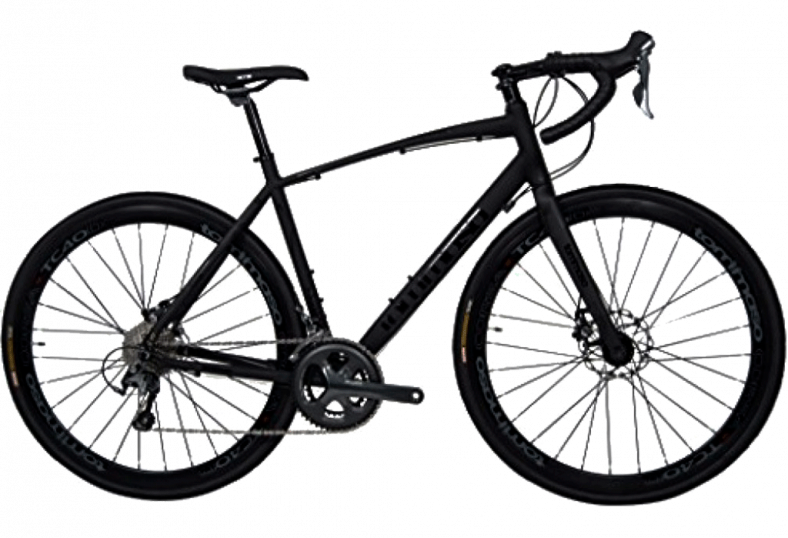 Tommaso Illimitate Shimano Tiagra |
| |||
| 6 | 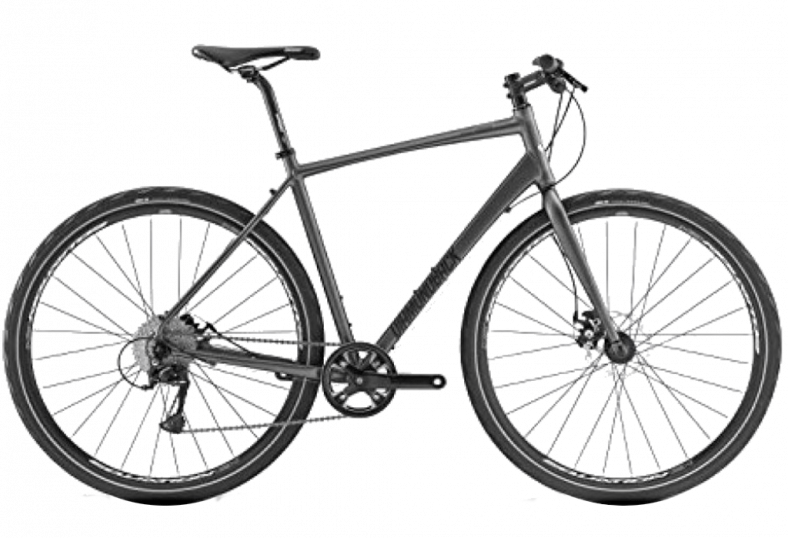 Diamondback Haanjo 1 |
| |||
| 7 | 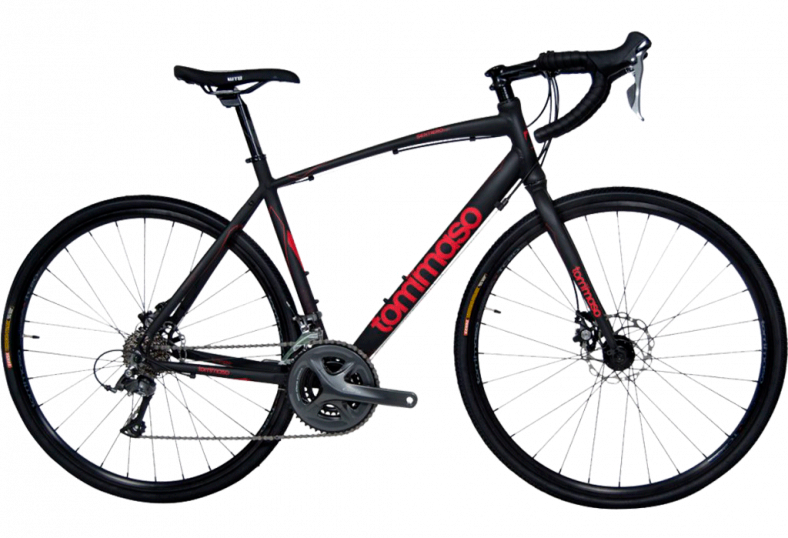 Tommaso Sentiero |
| |||
| 8 | 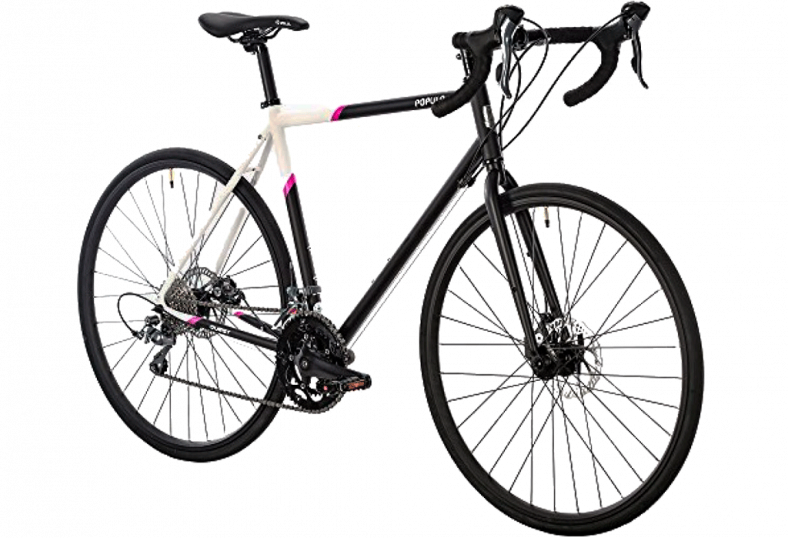 Populo Quest 16-Speed Gravel Bike |
| |||
| 9 | 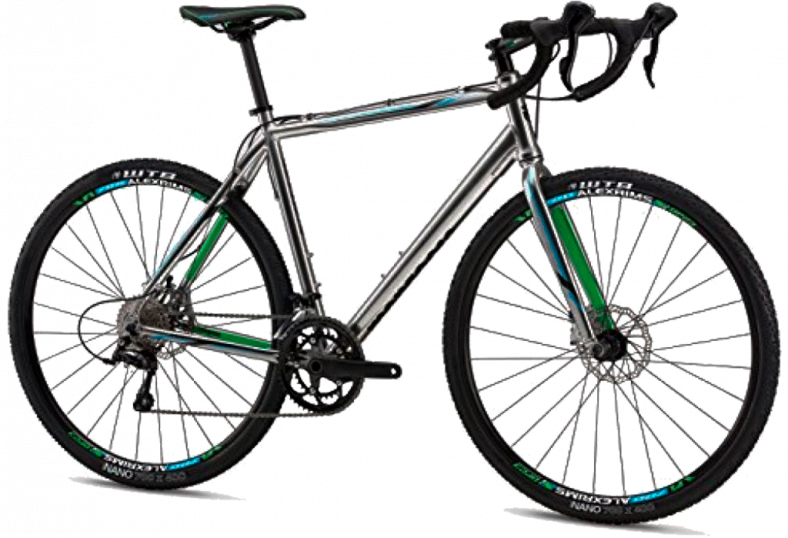 Mongoose Selous Sport Gravel Road Bike |
| |||
| 10 | 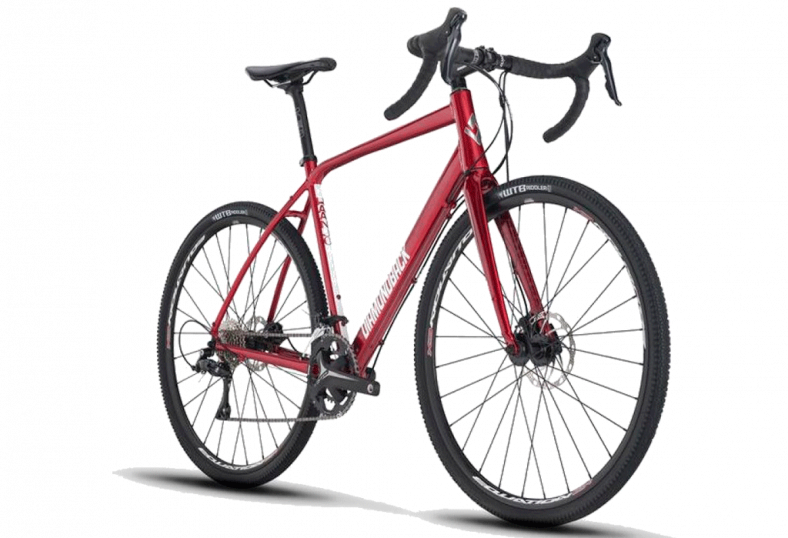 Diamondback Bicycles Haanjo 3 |
| |||
1. Tommaso Forcella – Best Aluminum Adventure Bike with Steel Fork under 1000
Another Tommaso with a wide array of gravel bike features built on a lightweight aluminum frame is the Tommaso Siena. This adventure bike is singled out because of its steel fork, tourney shifter, full suspension, and affordability among gravel bikes.
Key Features:
- Frame: 6061 SLA aluminum with SST steel fork
- Drive-train: Shimano Claris 30/39/50T crankset and 12x28T Claris cassette
- Shifters: 21-Speed Shimano Tourney
- Brakes: Tektro Lyra disc
- You get a lighter bike with more flexibility and a smoother ride from the aluminum frame of this bike.
- The steel forks on this bike make it more durable in the front when it comes to getting into rougher terrain and harder surfaces.
- Its drive-train with a 3x crankset and a 7x cassette allows you a wide range of gearing options for open road riding.
- The shifter on this model is well suited to match the specifics of its drive-train.
- It has quality, dependable brakes that are easy to adjust once they have been properly configured.
- This is the most affordable Tommaso gravel bike on the market.
- The 3x crankset is not necessary on a gravel bike.
- You might need to seek professional help for initial brake setup, because configuring Tektro Lyra disc brakes can be challenging for first timers.
- The steel forks on this bike are going to pick up more road vibration and jarring than softer forks.
Final Verdict
Those who are looking for an affordable entry level bike with some substantial components will be pleased with the overall performance of this bike, especially for the lower investment to get started.
2. Tommaso Sterrata– Best Carbon Fiber Gravel Bike under 1000
Those looking for a smoother ride with less vibration on those rugged back road tours will be pleased with the Tommaso Sterrata gravel bike. This bike is set apart from the field because of its higher end components, which are designed to provide you with a smoother ride and a greater variety of gearing options, as well as the essential durability of a gravel bike.
Key Features:
- Frame: compact aluminum with carbon fiber fork
- Drive-train: Shimano Claris 30/39/50T crankset, 12x28T Claris cassette
- Shifters: 24-speed Shimano Claris R2000
- Brakes: Tektro Lyra disc
- You get the flexibility and lighter weight of the aluminum frame along with the strength and durability of a carbon fiber fork with this bike.
- The 3x crankset and 12-28T cassette allow for more precise gearing.
- It is equipped with a higher end 24-speed Shimano Claris shifter for smoother shifting.
- The mechanical disc brakes are designed with highly durable Tektro Lyra construction.
- Its 32c tires provide greater gripping, traction and braking control on gravel surfaces.
- This bike is moderately priced given its valuable set of features.
- The 3x crankset might be a little bit more than is necessary on a gravel bike.
- The Claris drive-train is the lowest entry-level Shimano groupset.
- Disc brake caliper adjustments can be something of a challenge on this bike.
Final Verdict
Overall, you get the smoothest ride and some of the best components from higher end model bikes in the Tommaso Sterrata gravel bike without having to pay a higher end price.
3. Pure Cycles Adventure – Best Lightweight Gravel Bike under 1000 in 2019
High strength and durability combined in a lightweight gravel bike design with Pure Cycles’ Adventure gravel bike. You won’t have to worry about this bike coming apart on you when you hit rougher roads and its more simplistic 2x crankset is more user-friendly without sacrificing too much when it comes to gearing options.
Key Features:
- Frame: 4130 chromoly steel
- Drive-train: FSA Tempo Adventure, 48/32T, Sunrace CSM55 11x34T Cassette
- Shifters: 16-Speed Shimano Claris
- Brakes: Promax mechanical disc brakes
- The strength and durability of steel combined with the greater flexibility and lighter weight of chromoly steel is built into the frame of this bike.
- This bike has a 2x FSA crankset, which is lightweight, lacks play and has a smooth feel.
- The 2×8 crankset/cassette combination on this bike provides a decent range of gearing options.
- It comes with a quality 16-speed Shimano Claris shifter for easy shifting.
- This bike comes equipped with mechanical disc brakes for easy configuration and adjustment.
- Though more flexible than steel the chromoly frame encourages more vibration and jarring than its aluminum counterparts.
- The mixed brand crankset and cassette are something of a concern.
- This bike might be a little overpriced for its design features.
Final Verdict
You get a solid-built, lightweight bike with plenty of reputable components incorporated into the Pure Cycles gravel bike design, placing it at the top of lightweight gravel bikes.
4. Tommaso Avventura – Best Aluminum Gravel Bike under 1000
The Tommaso Avventura tops our list as the best aluminum frame gravel bike for under 1000. This bike has all the lightweight smooth ride features of an aluminum frame bike, with the added durability and reduction of vibration of carbon fiber forks. You get quality shifting and drive-train components in the design of this bike and plenty of built-in durability as well.
Key Features:
- Frame: 6061 SLA aluminum with HM carbon fiber fork
- Drive-train: 50/34T Shimano Sora Crankset, 11-30T Sora Cassette
- Shifters: 18-Speed Shimano Sora
- Brakes: Tektro Lyra disc
- You get the smoother ride and durability you need from a gravel grinder in this bike.
- The carbon fiber forks on this bike help reduce jarring and vibration on your hands and arms.
- The 2x Shimano Sora crankset and wide range cassette gearing on this bike is designed for increased power on back roads.
- The Sora drivetrain components move you up a notch in entry level Shimano groupsets.
- You get a higher end shifter with smoother action to decrease slipping and catching when you shift.
- You also get highly dependable and easily adjustable Tektro Lyra disc brakes.
- The initial brake configuration with the Tektro Lyra disc brakes can be challenging for first timers and you might want to seek professional help for a brake setup.
- This bike is a above the average price of bikes with similar features.
Final Verdict
When it comes to quality aluminum frame bikes, you can hardly go wrong with the Tommaso Avventura, which provides a smooth ride and features a carbon fiber fork to help reduce vibration and jarring on its front end.
5. Tommaso Illimitate – Best Aluminum Gravel Adventure Bike with Disc Brakes
Similar to its Tommaso brothers, the Tommaso Illimitate gravel bike sports an aluminum frame and carbon fiber forks for a smooth riding adventure and also features disc brakes. This bike will cost you a bit more, but it comes with higher end components to increase its overall value as a top of the line gravel grinder.
Key Features:
- Frame: 6061 aluminum with HM carbon fiber fork
- Drive-train: 50/34T Tiagra Crankset, 11x32T Tiagra Cassette
- Shifters: 20-Speed Shimano Tiagra 4700
- Brakes: Tektro Lyra disc
- A 6061 aluminum frame provides plenty durability with flexibility for a smoother ride.
- It utilizes a carbon fiber fork to reduce vibration and jarring on the front end.
- The Tiagra crankset and cassette on this model provide the highest quality drivetrain possible for gravel bikes at this price point.
- Its 20-speed 2×10 gearing provides plenty of power and speed for gravel grinding.
- You also get a high end shifter in the Tiagra 4700.
- This bike also comes with an easy to adjust Tektro Lyra mechanical disc brakes for added confidence.
- You are going to pay the top of the price range for this bike.
- You might need to seek professional help for the initial brake setup, because configuring Tektro Lyra disc brakes can be challenging for first timers.
Final Verdict
The components, lighter weight, and overall performance of this bike would make it the overall top choice on this review if it could be purchased more toward the middle range of the pack, but it is still a top choice as an aluminum frame gravel bike with disc brakes.
6. Diamondback Haanjo 1 – Best Hardtail Gravel Bike under 1000
For those who are into 1x cranksets on a gravel or adventure bike, it is hard to go wrong with the Diamondback Haanjo 1 gravel/mountain bike hybrid. Diamondback is a trusted name in bikes that designs for the demands of going off the beaten path and this bike holds up to their standards, making it our top pick for the best hardtail gravel bike for under 1000.
Key Features:
- Frame: 6061-T6 aluminum alloy with steel fork
- Drivetrain: 38T Single Ring crankset, Shimano HG201, 11x36T Cassette
- Shifters: 9-Speed Shimano Acera M3000
- Brakes: Tektro Aries Mechanical Disc
- This bike draws from the best of the mountain bike and gravel bike world making it a ideal choice for rougher gravel grinding conditions.
- The steel fork on this bike makes it more durable in rougher terrain.
- It features a 1x crankset to eliminate shifting issues.
- The Shimano Acera shifter is designed for MTB style handlebars and riding, allowing your gravel grinder to double as a lower end mountaineer.
- Its mechanical disc brakes are dependable and easy to adjust.
- You can get into this bike for a moderate investment.
- The 1x crankset on this bike limits the range of gears available for faster and easier navigating terrain.
- The geometry of this bike is meant to have dropbars.
- The overall feel of this bike is going to tend to be rougher than the others in this class of gravel bikes.
Final Verdict
For the graveler that often encounters mountain bike terrain, this is the right bike with plenty features to work as a low-level mountain bike without giving up all its road bike features.
7. Tommaso Sentiero – Gravel Bike with Compact Aluminum Frame and Steel Fork
There are a lot of similarities between the Tommaso Sentiero gravel bike and its Sterrata brother, making it a solid choice among compact aluminum gravel bikes. In essence, you get the same drivetrain and shifter features, but a steel fork and a different brake setup, making it slightly more durable in the front and requiring slightly less cash to bring it home.
Key Features:
- Frame: 6061 SLA aluminum with SST steel fork
- Drive-train: Shimano Claris 30/39/50T crankset and 12x25T Claris cassette
- Shifters: 24-Speed Shimano Claris
- Brakes: Avid BB5 Disc Brakes
- Its compact aluminum frame makes this a lightweight bike which provides a smooth ride.
- The SST steel fork puts a little extra stability in the front end to handle harder surfaced riding and rougher terrain.
- It comes with a wider variety of gears and ratios with its 3x crankset and its is geared to be a faster.
- It features a 24-speed Shimano shifter for smooth and dependable shifting.
- You can take this bike home with an investment on the lower end of the other models.
- The 3x crankset is not necessary on a gravel bike.
- Though more durable, there will be more jarring and vibration on the front end of this bike from its steel forks.
- The Avid BB5 disc brakes on this bike are below the standard of the Tektro Lycra bikes found on other models in this review.
Final Verdict
This bike has the potential to navigate rougher terrain and harder surfaced roads than your typical gravel grinder due to its steel forks, but it does not give up all its road bike features to keep it among one of the best gravel bikes on our list.
7. Populo Quest – Best Lightweight Steel Gravel Bike with Disc Brakes
For those who ride on rough gravel and more technically difficult terrain, the Populo Quest fills a specific need. This bike is built to power through rough terrain with extra torque and plenty of durability, but it can still provide a smooth ride for those out on the open road.
Key Features:
- Frame: 4130 double butted chromoly steel
- Drive-train: Prowheel 50/34T Crankset, Sunrace CP 12x34T cassette
- Shifters: 16-Speed Shimano Claris STI-2400
- Brakes: Tektro mechanical disc
- The double butted chromoly frame on this bike gives you the greater strength and durability of steel without completely sacrificing your smooth ride and adding weight.
- It comes with a more than adequate 2x crankset pair with an 8 speed cassette that is designed to provide plenty of torque.
- You get a quality shifter with 16-speeds to allow a decent range of gearing options.
- Tektro mechanical disc brakes provide easy adjustment as well as quality and reliable stopping power.
- This bike can take more abuse than your average gravel bike without breaking down.
- The size of the rings on both the crankset and the cassette limit the speed of this bike.
- The mixed brand crankset and cassette is something of a concern when it comes to parts and maintenance.
- The Claris shifter on this bike is at the low end of entry level Shimano groupsets.
Final Verdict
This bike fits in a very specific niche where rough riding and riding gravel meet. It is the a that can take a lot of abuse, but still provide a smooth ride when you get back on a smoother surface.
8. Mongoose Selous Sport – Good Gravel Bicycle with Double-Butted Aluminum Gravel Grinder Frame
A good gravel bike with a lightweight double-butted aluminum gravel grinder frame is available in the form of the Mongoose Selous Sport gravel bike. This bike mixes a lot of gravel and mountain bike features to create something of a hybrid with primarily gravel grinder attributes.
Key Features:
- Frame: double-butted aluminum with full alloy fork
- Drive-train: Samox 50/34T crankset, Sunrace HG50 11x34T cassette
- Shifters: Shimano Sora ST-R3000
- Brakes: Promax disc
- Its sloped horizontal tube on a double-butted aluminum frame is reminiscent of mountain bike geometry, but with a smoother ride for open road gravel.
- The aluminum makeup of this bike makes it lightweight.
- Its full alloy fork allows for a softer feel in the front end.
- It combines a 2x crankset with a 9x cassette for a wider variety of gear options.
- The drive-train on this bike is built for higher torque.
- Shifting this bike is facilitated by a quality Shimano Sora shifter.
- You will pay at the higher end of price range for this bike.
- The mixture of brands among the drive-train components as well as the shifter may be cause for concern.
- The ring sizing on the crankset and cassette will limit the speed of this bike on the open road.
Final Verdict
This is a solid, lighter bike that will do a great job on gravel terrain in mountains where climbing will be a regular part of your ride. It also has some of the geometry of a mountain bike for when you encounter more challenging terrain as well.
9. Diamondback Haanjo 3 – Best Aluminum Gravel Bike with Aluminum Fork
Those who like to get on an open back road and really let their bike hum will be impressed with the Diamondback Haanjo 3. This aluminum frame bike is the lightest of this class of gravel bikes and includes a lighter weight and more flexible aluminum alloy fork as well. It is setup to be one of the fastest gravel bikes on the road.
Key Features:
- Frame: 6061-T6 aluminum alloy with aluminum alloy fork
- Drive-train: FSA Omega Adventure Mega, 46/30T crankset, Shimano HG-400 11x32T cassette
- Shifters: 18-Speed Shimano Sora
- Brakes: Tektro Lyra disc
- With its more flexible aluminum frame and aluminum fork, this bike is going to reduce jarring and vibration in the front in as well as throughout the bike.
- This is a lightweight bike that does not add weight to those already difficult uphill climbs.
- The drive-train on this bike has 18 gearing combinations that enhance speed.
- The Shimano components in the shifter and cassette match up well for smoother performance.
- The better quality Tektro Lyra mechanical disc brakes on this bike provide secure stopping power.
- You might need to seek professional help for initial brake setup, because configuring Tektro Lyra disc brakes can be challenging for first timers.
- Where you might get more speed on this bike, you are going to give up a little torque due to its crankset ring size.
- This bike is at the top end of this price point category as well.
Final Verdict
The lighter weight and gearing of this bike makes it the fastest in the group, making it best suited for a more open road style of gravel riding instead of negotiating more mountainous terrain.
What are Gravel Bikes?
Gravel bikes fill a niche between mountain bikes, which tend to navigate rough and unpredictable terrain and the more delicate and highly refined road bike used in the Tour de France. Also gravel bikes are called adventure bikes. Besides looking into some specific characteristics that set gravel bikes apart from others, one of the best ways to define a gravel bike is to compare it to cyclocross (CX) bikes, mountain bikes, and road bikes.
Adventure Bike vs Cyclocross
Gravel bikes and CX bikes share several characteristics, including: stiffer and more durable forks, curved style road handlebars, and most often 29 inch (74 cm) wheels. However, Spinatura points out the distinctions to be drawn between the two in five areas:
- Purpose. Gravel bikes are not made for speed and competition, where CX bikes are essentially road bikes designed to negotiate trails with a muddy or gravel surface.
- Geometry. Gravel bikes have a comfortable, stable frame for traveling long distances, but CX bikes tend to sacrifice a lot of these comforts for speed.
- Horizontal Tube. The horizontal tube tends to be curved for more stiffness on a gravel bike and tends to be parallel to the riding surface on a CX bike.
- Pedals. Gravel bikes tend to have the pedals in a lower, more relaxed position, where CX bikes have them higher to avoid obstacles that might be encountered in competition.
- Weight. The design and construction of gravel bikes are meant to carry loads and are heavier, but CX bikes tend to be lightweight.
Mountain Bike vs Gravel Bike
Distinctions can also be drawn between gravel bikes and mountains bikes in a similar fashion. In general, mountain bikes tend to make up the extreme while on the other side of the gravel bike. Utilizing the same formula above, for analysis, let’s compare these two types to get a more complete definition of what makes upa gravel bike:
- Purpose. Gravel bikes tend to be a little faster and geared more toward riding back roads, where mountain bikes are designed to get off the beaten path and onto trails that would crush a more delicate bike.
- Geometry. Mountain bikes tend to take away the curved road bike style handlebars and replace them with straight bars, they tend to be longer and lower, than gravel bikes as well.
- Horizontal tube. The tube on a mountain bike will be more steeply sloped, sometimes to the extreme.
- Pedals. The pedals on a mountain bike tend to be placed in a similar low position for greater control, but they tend to be wider and easier to find if/when your feet lose contact with them on rough terrain.
- Weight. The more durable construction necessary to keep a mountain bike from falling apart over rough terrain make it a bit heavier, but there are mountain bikes with strengthened alloys that approach similar weights to a gravel bike.
Gravel Bike vs Road Bike
In general, a gravel bike is a type of road bike that is designed for back roads instead of smoother surfaces faced on a road bike. Again, we’ll make use of the same set of criteria to compare these two types.
- Purpose. Road bikes differ from gravel bikes in that they are designed for getting out on the open road and cruising at high speed for competition, while gravel bikes better negotiate unpredictable back roads and are for a more leisurely ride.
- Geometry. The head angle on a gravel bike is slicker to provide for relaxed steering on back roads than a typical road bike. A longer wheelbase is also typical with a gravel bike.
- Horizontal tube. The horizontal tube on a gravel bike will tend to be more sloped or curved to make getting on and off easier, where this is not usually a major concern for road bikes.
- Pedals. The pedals on a gravel grinder will be lower to the ground for a more comfortable, long-distance riding position, where a road bike tends to have the pedals higher off the ground. In addition, road bike pedals are designed to keep your feet in place for the duration, while gravel bikes allow more freedom for taking your feet off the pedals and relaxing.
- Weight. Gravel bikes are pigs, when it comes to comparing weight with a road bike, though a larger number of gravel bikes are using higher grade alloys with more strength and durability with lighter weight.
What features make up the best gravel bike?
The comparisons we have just drawn between different bikes should be helpful, getting into some of the specific features you will find in agravel bike will help to home in on a more precise definition of what makes up a gravel bike.
What material is used for a gravel bike’s frame?
Frame material on gravel bikes have a wide range of diversity and there is also a wide variation of opinion as to which is the best. Let’s take a closer look at the three most common frames found on gravel bikes.
Steel
Heavier steel frames are common on lower end bikes and are certainly durable enough to handle terrain. You will find a large number of bikes utilize high carbon steel (HCT) in their forks, even when the overall build of the bike is aluminum or another alloy. What some riders experience with these frames is a little bit more jarring and vibration compared to other materials, which is less desirable on a long ride. Steel is more apt to rust over the long-term.
Chromoly Steel
This steel alloy includes chrome and molybdenum. This is a lightweight, high strength steel that reacts well to heat treatment, shaping and welding as well. The most common alloy used in bike frames is 4130. It is typically shaped and butted to reduce excess weight. It is lighter than HCT, tends to be more flexible and removes some of the jarring and vibration common with standard steel frames.
Aluminum
Aluminum frames are typically a hardened alloy. The most common type is 6 series aluminum, which blends magnesium and silicone to create magnesium silicide within the metal. This alloy allows for a heat treatment, high formability, and welding with great strength while still remaining relatively light. The most common aluminum alloy you will see in a gravel bike is 6061-T6. It tends to be more flexible, rust resistant and reduces vibration, but it also tends to be more expensive.
Carbon Fiber
The best way to describe carbon fiber is think of plywood. Several layers of carbon fibers are combined together to create plies. This makes for a very strong material that is also very lightweight. Compared to other materials, it tends to reduce vibration and jarring the most. The drawbacks to carbon fiber are its tendency to be brittle and its price. You won’t find a lot of gravel bikes under $1000 with a carbon fiber frame, but some will use this material in the forks.
What type of drive-train and shifters are used on gravel bikes?
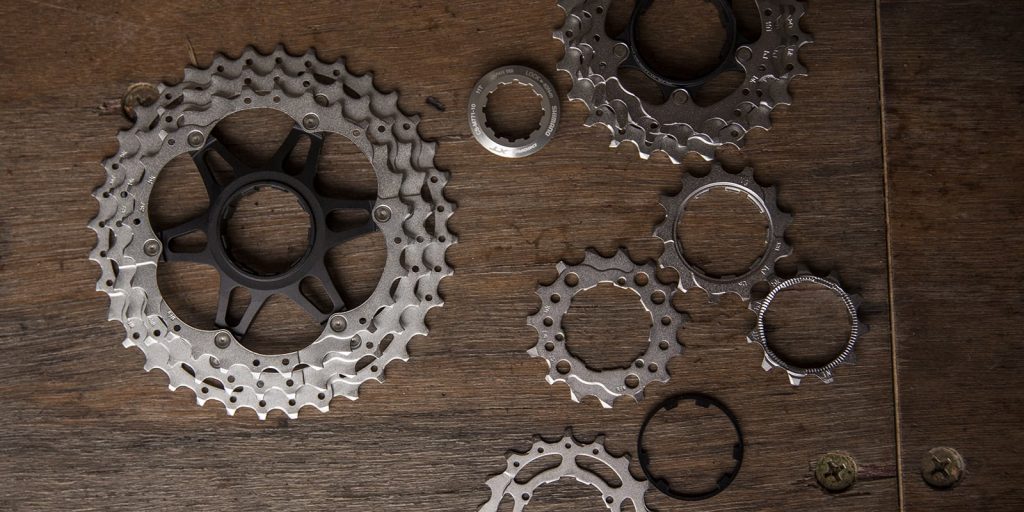
Crankset
The crankset is the gearing or sprocket attached directly to the pedals or the crank of the bicycle. Cranksets can come in single-ring (1x), double-ring (2x), or three-ring (3x) styles on gravel bikes. You will get a variation of opinions when asked which cranksets are best suited for a gravel bike. Here are some of the advantages and disadvantages of each:
- 1x cranksets are simpler because they do not have a second shifter and derailleur to deal with. In rougher terrain this simplicity can be an advantage, but it limits your options when it comes to smoother riding.
- 2x cranksets add issues to shifting and derailleurs that you don’t have with a 1x crankset. However, you get a wider range of gearing options. This type of crankset is more common than either of the others for gravel riding.
- 3x cranksets are similar to 2x cranksets, but provide you with a more refined choice in choosing gears. These are less common on gravel bikes because they don’t tend to be necessary for most of the terrain covered by gravel bikes where they are prized on road bikes.
Cassette
When discussing cassettes, things shift to the additional variable the crankset type provides to the gearing equation. If a bike has a 1x crankset, the tendency is to go to a cassette with a larger number of rings and a wider range from the smallest to largest in order to provide a broader diversity of gearing options. With multiple 2x or 3x cranksets, the cassette can have fewer rings and a narrower range from smallest to largest and still provide a full range of gearing options.
Shifters
There tends to be less of a controversy surrounding the type of shifters used on gravel bikes. In general, indexed shifters are the norm. The only variation in shifters tends to be between road bike style shifters and MTB style shifters. The tendency is toward the road bike style because this style is used on drop-style or curved handlebars. The shifting sets, which include the shifters and derailleurs, differ in quality and popularity from various manufacturers and designers. Common shifters found on most bikes under $1000 are made by Shimano.
What type of brakes are best for a gravel bike?
By and large, you are going to find disc brakes on the best gravel bikes under 1000. An excerpt from Tips & Concepts for Gravel Bike Setup, states:. ”Mechanical Disc brakes – Simple to configure, easy to adjust, and not prone to the overheating issues sometimes associated with hydraulic disc brakes. The negatives are power lacks compared to hydraulic brakes, and they are not self adjusting.” Though you might like to have a gravel bike with hydraulic disc brakes, they are not going to come standard on a model at this price point. They will have to be an aftermarket add-on.
With your understanding of what makes up a gravel bike, you are better equipped to compare how various gravel bikes incorporate the features and benefits characteristic of their type. The following reviews will help you get an even better understanding of what to expect when you shop for a gravel bike.







